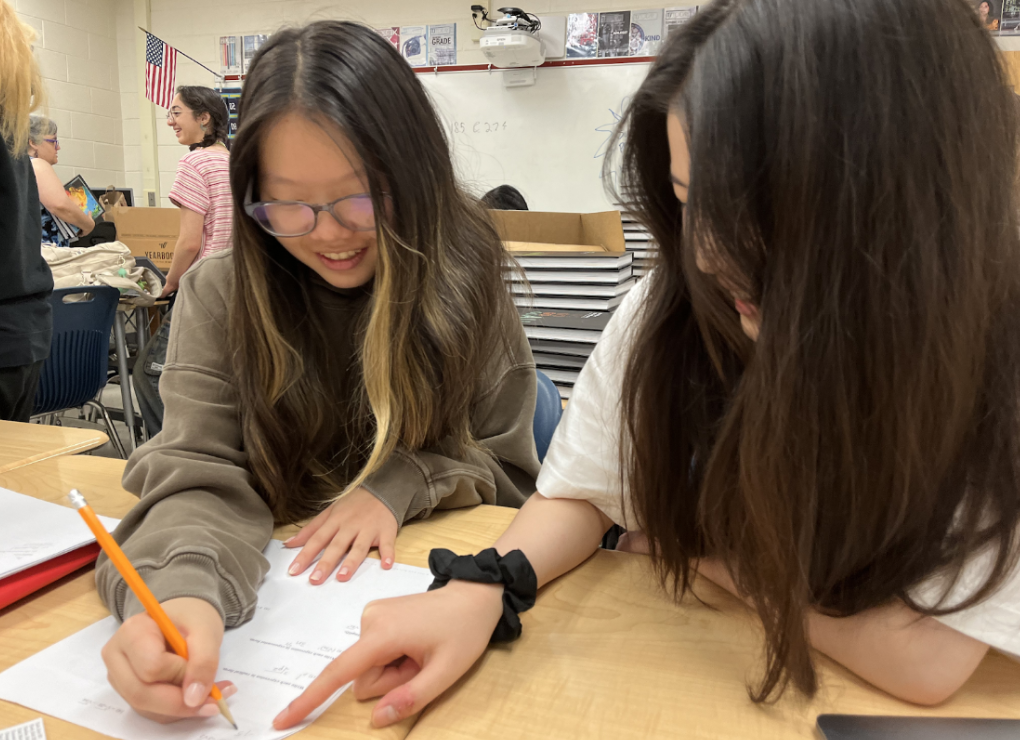Roll the dice and hope you get lucky; it’ll determine your fate and grade. You’ve studied all night, preparing for the test, ready for this moment. You pull a slip of paper out of a cup, and on it is written another student’s name, your partner for the test. Your heart drops; it was not your friend as you were hoping. You glance across the room at your partner, and they are gaming on their computer with no notes in sight. You feel doom impending.
That might’ve seemed dramatic since most are filled with excitement when a teacher announces a group or partner test, in which a group will work together to complete a test. It’s mutually beneficial for all group members since they can check each other’s answers and collaborate. Surely, the combined knowledge of everyone in the group would boost grades and make the test much easier, right?
However, this optimism falters when the teacher announces that students will not be choosing their own groups but will be randomized, or the teacher will be assigning groups. Yet it does not deter the majority of students until test day when they’ve been paired with a student who did not study for the test, someone who was hoping to completely rely on their partner for answers.
It’s an unfortunate situation, but one that I’ve faced a few times, and it could be avoided if students could choose their own partners or groups. After all, the entire point of a group test is for it to be beneficial for all parties, not just for one partner: when students choose their own groups, they are likely to select people who reflect their own skill level, effort and time spent studying. This also allows for better collaboration and learning to happen between all members of the group.
However, most teachers do not account for this, assuming that randomly selecting partners will create “fairer” groups. Some teachers even intentionally pair a partner with a higher grade with an individual with a lower score in hopes that the lower-scoring student’s grade could be brought up. However, the other student must also be considered, who deserves help to score a higher grade as well. After all, the point of a group test is not for lower grades to be raised and higher grades to remain the same—it is supposed to be a tool for learning and an opportunity for all group members to improve.
Some might argue that this prepares students for a real-world job, in which not all members might contribute equally to a project. However, if it is possible to avoid a situation like this, a solution should be made instead of having disadvantages forced upon students.
Additionally, teachers will typically not curve exams when group corrections are completed, arguing that the group work, itself, was an artificial curve. However, for a student who did not benefit from their group, this is quite unfair.
The recent Math 4, the first half of Honors Pre-Calculus, polars unit partner test was an example. Personally, I was relieved to get a partner who matched my skills even though the pairing was random. We were able to catch each other’s mistakes and solve a difficult problem using teamwork, something neither of us would have been able to do without a capable partner. Clearly, that is the best outcome for a group test.
However, I was not as lucky during an Honors Biology group test about ecology and evolution just a month prior. My group of three included a member who did not contribute whatsoever to the answers we decided on. Before the test, he asked me what my grade in the class was, and when I responded, he became considerably more optimistic about his grade prospects. My concern turned into outrage when, throughout the test, he resorted to simply copying my and the other group member’s answers, not contributing during the group’s discussions. The next class, he had the nerve to brag about his score on the test, as if he deserved it.
Although my personal experience with group tests has its ups and downs, I’ve often heard similar complaints from friends, including stories of people not even bringing notes for open-note tests and blatantly copying answers. This is not a rare occurrence and must be prevented.
Group tests are typically an advantage for all students, but due to cases like the ones previously mentioned, it is a system that requires remedy. There is truly not a good reason for students to not choose their own partners, but if teachers do not wish for students to completely choose, perhaps using a Google Form beforehand for students to list people they’d like to be partnered with and people they wouldn’t prefer to be in a group with, and teachers could take this into consideration. Allowing students to have group members that match their own skills is essential to make group tests a better learning opportunity.

